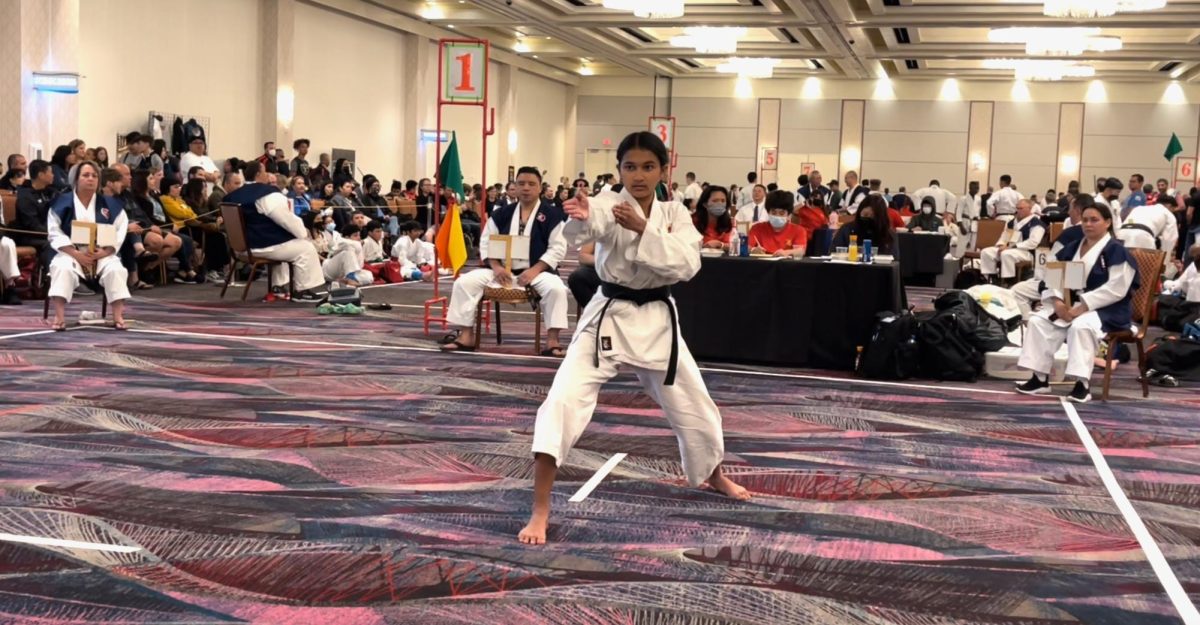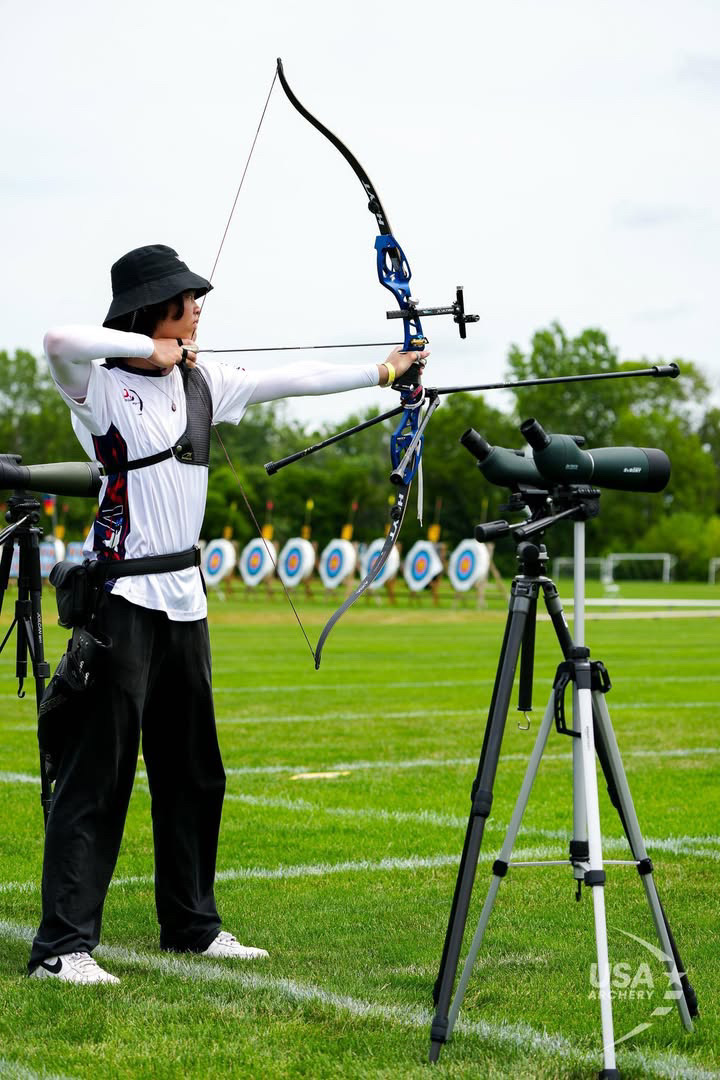Smithsonian’s National Zoo: more than just animals
Zoophobia
Henry Jacek dreams about the zoo.
In his dream, he is three years old and sticky-handed, swaying between two bronze lions, clutching the hem of his father’s shirt as his sister sprints ahead toward the cheetah exhibit, where she inevitably shouts, “Mom! Why is it crying?” Where his mother would inevitably answer, “Henry, why don’t you come closer?”
He does. He loops his fingers through the outer fencing, pushes his nose through the spaces. He watches as the cat and its sweeping tail approaches the fence, and suddenly he seems to close. His lungs seem to fill with cat air. The cat is slowing down, its paws thudding, its jaws widening to reveal fangs of some sort.
And that is always when he wakes up.
“[The dream is] a product of something called zoophobia, ironically,” said Jacek, as he power-walked along the downhill gravel path fringing the American Bison exhibit. Two children scurry out of his path.
“What’s a grown man with zoophobia doing at the zoo?” Jacek said, laughing and scratching his head. “Well, that’s the point.”
Jacek, when he was six years old, traveled to the National Zoo with his first grade class, only to run shrieking from the flamingo exhibit as his fellow classmates stared and giggled to each other.
He remembers hiding behind the bird house with his peanut butter and jelly sandwich, praying for nobody to notice a trembling blonde boy, one of the few children not screaming with delight. When his teacher finally followed him to his hiding spot, he didn’t want to admit that animals only ever meant gaping jaws and long teeth and glowing eyes to him — especially because he thought zoophobia was a product of a traumatizing experience, and he’d never been bitten or scratched or clawed by any animal.
In fact, it was his lack of familiarity with animals that caused sweaty palms and an achy chest every time he even thought about the zoo.
“This place is so full of life, [and now] now when I pass the Bird House my fear feels distant,” Jacek said, gesturing at a field trip group crowding gazing down at a chewing panda. Their laughter overwhelms his voice. “You see something like that and then you realize: the zoo seduces you.”
…The zoo seduces you.
Of course, the zoo was not always a welcome part of his daily routine. When his jogging partner, Jackson Tiler, called him one morning and mentioned that the zoo at 8 a.m. was “simply heaven,” Jacek was more than a little skeptical.
“I kept telling him, ‘The zoo? The zoo? The zoo is for people who like animals,’” Jacek said. “I had this [misconception] that the zoo is only for kids and…scientists, maybe.’”
But he agreed, simply because he knew that the zoo in the early morning would provide relief from the clutter of traffic and commuters. On a crisp Saturday morning in 2012, Jacek donned his neon orange shorts and found himself once more between two stone lions, the sign devoid of clambering children. He took a slow breath. He checked his shoelaces one last time. He ran.
“It was more motivating, because running past cages when you’re afraid of animals is [the] easiest thing to do,” Jacek said. His friend Tiler could barely scurry along behind him. After a few weeks of circling the same route along Olmsted Walk, jogging past the cheetahs, past the pandas and turning right at the Pachyderm Plaza, Tiler suggested that they eventually lap around the Bird House.
“I immediately thought that this was my opportunity,” Jacek said. “The farther I go, the closer I get, the more I’m actually [physically] overcoming the fear.”
Jacek stopped listening to music while he ran. The bark of pandas and the huffing of cheetahs became the soundtrack, and if he was going to become one of the many chatting joggers at the zoo, he was going to have to get used to it. He even pondered buying a white noise app that included the “sounds of the Amazon,” which was the route he wanted to tackle next. Then the apes. Then the elephants.
And finally the Bird House, or so he hoped.
I had this [misconception] that the zoo is only for kids and…scientists, maybe.
“I felt so strange,” Jacek said. He was sometimes so terrified that the faintest rustling of leaves overhead sent him sprinting in the opposite direction. Yet, every time, he found himself back between those stone lions in the morning, racing Tiler to the pandas.
After two months, they weren’t alone anymore. Sally Clare, another jogger who is afraid of any breed of cat, dog, or bird joined their quest to reach the Bird House, their mission to widen their route every two months until it would eventually encompass the entire avian complex. She notices that they always used to speed up as they passed fenced enclosures and tanks that hinted at the paws and flippers within.
“Now, we have to keep ourselves on track, keep [ourselves] actually running, or else we’d be with those kids over there, ogling,” said Tiler. He gestures at three children climbing attempting to climb out of their strollers. “Cats, cats!” they shout, as their mother reads a nearby plaque.
Two years ago, that sort of childish glee seemed impossible for Jacek, who was once so embarrassed by his zoophobia that he agreed to walk his vacationing neighbor’s dog every day for a month — and then promptly dropped the leash two blocks from his apartment. Ex ercise was his excuse for visiting the zoo three or four times a week, even when the park across the street might have been more convenient.
ercise was his excuse for visiting the zoo three or four times a week, even when the park across the street might have been more convenient.
He stayed for the animals.
“Strange to admit, but you start to warm up to them,” Jacek said. “All three of us have, [so many] people fall in love. I mean, I can run through the Amazon, walk through Asia…”
“And visit Africa!” said Tiler. They laugh together. As the slope begins to ease and the blade-leaf bamboo stalks meld into low shrubbery and dusty landscapes, Tiler and Jacek change adjust their pace to a leisurely walk. As if they’ve crossed an invisible border into a new and unknown territory, their footsteps become more hesitant, uncertain.
They treat the rocks like artifacts from faraway countries and gaze wide-eyed at animals of vastly different histories. The ape from North America and the wolf from South America are on two sides of one building, not a quarter-mile away.
Jacek doesn’t quite get how the fear has faded away, but he knows that it began with a sense of wonder.
“I think, ‘Man, how is this still D.C.?’ And you only get that when you really look at the animals,” Jacek said. He points at a sign in the shape of a red pagoda.
Man, how is this still D.C.?
As he enters, Tiler begins to snap photos, his album already littered with more than 200 photos of seals and cheetahs and bison. They have yet to reach the Bird House, but when their circuit expands along that path, they’ll celebrate by taking pictures with the flamingos.
“I know so much flamingo trivia,” Jacek said. “Just for preparation. I may have hated them before, but when I get there they’ll [be] smothered with my love.”
Jacek smiles and leans over the railing, ducking behind a cafe to gaze down at the young panda Bao Bao curl high up in the branches. He admits that he’d much rather watch than run, which he blames entirely on the park.
“What a strange bunch we are,” Jacek said. “[Sally and I] are two zoophobes at a zoo, and you didn’t ever care about sleeping pandas before.”
“Admit it, we’re hooked,” said Tiler, shaking his head. “I guess we must be evolving along with this zoo.”
The exercise band
“And four more on the right! And one!”
Along Olmsted Walk, now crowded with arriving schoolchildren, four women walk in the opposite direction as Jacek, Tiler and Clare. The women and their instructor, who continues to count, “One, two! One, two!,” leads the women along the cobbled walkway, their exercise bands slung over their shoulders or taut in a diagonal line between their fists.
Every Friday morning at 8 a.m., the zoo aerobics class meets at the front entrance of the zoo, where their teacher leads them across the zoo, demonstrating various aerobic exercises and shouting encouragements.
“Yes, I know it looks silly,” said Linda Heaney, who attends the class whenever she can. “But you know what, I don’t particularly care, because we are a group of interesting women.”
Yes, I know it looks silly…But I don’t particularly care.
The group, which consists of a reporter from USA today, an event manager for Laura Bush and a leader of a speaker’s bureau, chat and laugh over push-ups against safety rails and bicep curls in front of zebra enclosures.

“We can go in front of the pandas and go like this,” said Heaney, tugging at the elastic band with its opposite handle beneath her right foot. “That’s something you don’t get working out in front of the TV or at the gym.”
Even used to a lifetime of worldwide traveling, Headey and her companions are still surprised daily by the zoo and its evolving landscape. Some days, the flamingos rush into the water and frolic, some days the otters come out to play; other days, the exhibits are labeled with plaques that read “Nobody’s home.” The zoo seems to transform in the matter of a week.
“That’s what’s special, there’s always something new,” Headey said. “That’s the zoo.”
More than just animals
“How much is this?”
“16 dollars.”
“Maybe some other time.”
The woman exits the kiosk and continues with her stroller towards the panda exhibit. Aya Garcia shrugs and returns to her cash register, wedged among the racks of pink panda shirts, glass figurines and toddler socks embroidered with bamboo stalks.
About fifteen feet down a path to the right of Olmsted walk, a hidden gift shop pauses visitors along the route to visit Bao Bao the panda.
Garcia has been manning the counter for two years, and she’s been asked a range of questions from “How much?” to “Is there a penalty for peeing near the exhibit?”
The earthy scent of damp bamboo and the sharp bark of nearby pandas have become so familiar that she sometimes believes she can hear it on the street. Some days, she wishes she could wake up to the scent of rain, cinnamon and pandas.
“The zoo [is] a constant in my life, but I find that it isn’t that way for most people,” Garcia said. “You’ll find those people who come and don’t know they like the zoo…and the next day, they want to come back.”
When she was first employed, she wasn’t quite sure if she thought imprisoning animals was ethical or even safe. The guilt never seemed to dissipate, and one day she decided to leave the store to wander through the Amazon exhibit, where animals are free range. It was there, among the wide, leafy fronds and the blue specks of tree frogs, that she had her epiphany.
“I realized something, seeing all of us staring [and laughing] and all that,” Garcia said, nodding. “The zoo isn’t just about animals. The zoo will always say more about people than anything about the animals.”
Story by Kristin Chang
[slickquiz id=18]

















